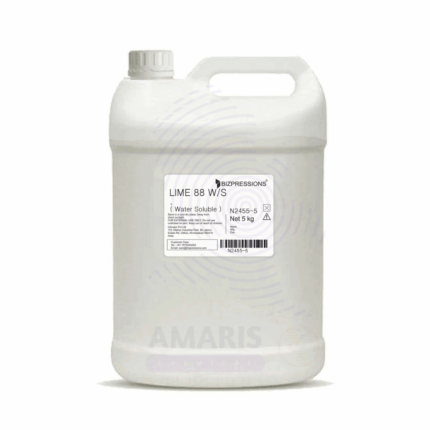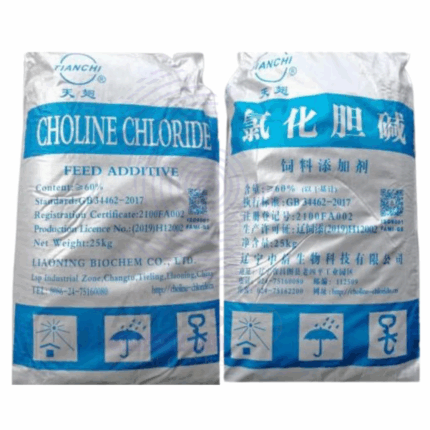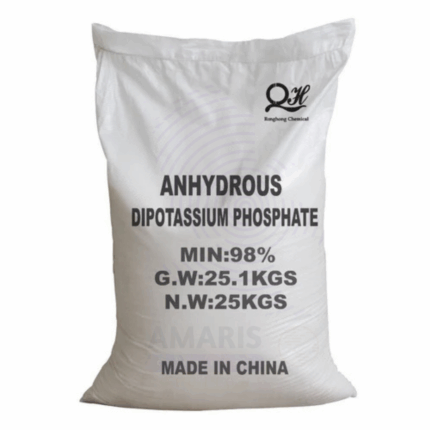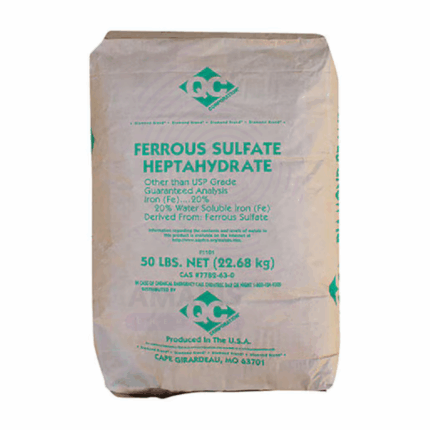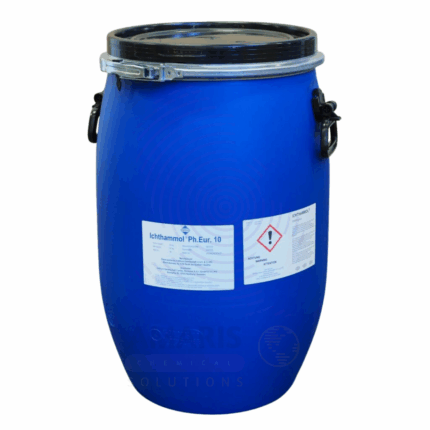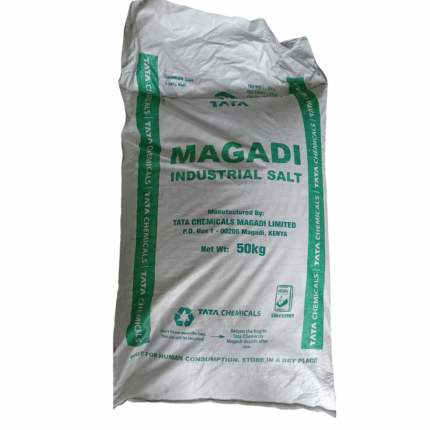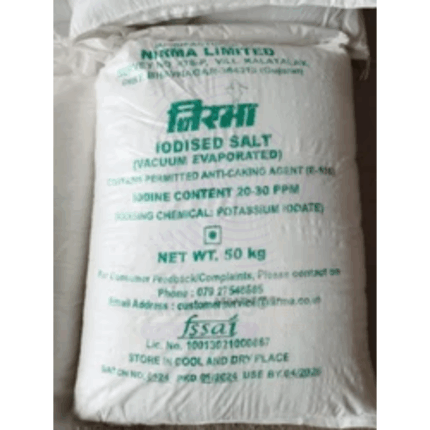“Calcium Carbonate Uncoated” has been added to your cart. View cart
Acid Oil Soya
Whatsapp Order
Acid Oil Soya is a byproduct derived from the refining of soybean oil. It is a dark-colored, free fatty acid-rich liquid containing mainly oleic and linoleic acids. Acid Oil Soya is commonly used in industrial applications such as soap making, animal feed, and as a raw material in the production of biodiesel, lubricants, and other chemicals.
Description
Table of Contents
Toggle
Primary Uses
- Biodiesel Production
- Used as a low-cost feedstock for biodiesel manufacturing due to its high free fatty acid (FFA) content.
- Processed via esterification/transesterification to produce fatty acid methyl esters (FAME).
- Animal Feed Supplement
- Mixed with feed pellets as an energy source for livestock (poultry, cattle, pigs).
- Provides fatty acids for improved animal growth and coat condition.
- Soap & Oleochemical Industry
- Raw material for low-grade soaps and fatty acid distillation.
- Used in lubricants, greases, and industrial surfactants.
Secondary Uses
- Agriculture
- Acts as a dust suppressant in feed mills.
- Used in organic pesticides as a carrier oil.
- Wastewater Treatment
- Helps in flotation processes to remove oil/grease from industrial effluents.
- Rubber & Plastics
- Softening agent in rubber recycling.
PRODUCT KEY ATTRIBUTES
1. Basic Identification Attributes
- Chemical Name: Hydrolyzed Soybean Oil Fatty Acids
- Common/Trade Names:
- Soya Acid Oil
- Soybean Acid Oil
- Hydrolyzed Soy Oil
- CAS Number: 68308-53-2 (for soybean acid oil)
- HS Code: 1518.00.90 (vegetable oil acid oils)
- Molecular Formula: Variable (mixture of C16-C18 fatty acids)
- Synonyms:
- Soybean fatty acid distillate
- Acidulated soybean soapstock
- Soy oil fatty acids
2. Physical & Chemical Properties
- Physical State: Viscous liquid to semi-solid
- Color & Odor: Dark brown to black; characteristic fatty odor
- Melting Point: 20-30°C (depends on composition)
- Boiling Point: >300°C (decomposes)
- Density: 0.90-0.95 g/cm³ at 20°C
- Solubility:
- Water: Insoluble
- Organic solvents: Soluble in ethanol, ether, chloroform
- pH Level: 2-5 (acidic)
- Vapor Pressure: Negligible at 20°C
- Flash Point: >150°C (COC)
- Viscosity: 50-100 cP at 40°C
3. Safety & Hazard Attributes
- Hazard Class (GHS):
- Skin Irritation (Category 2)
- Eye Irritation (Category 2)
- NFPA Ratings:
- Health: 1
- Flammability: 1
- Reactivity: 0
- Exposure Limits:
- No specific OEL established
- General dust limit: 10 mg/m³ (total), 5 mg/m³ (respirable)
- Reactivity:
- Incompatible with strong oxidizers
- Corrosive to some metals
4. Storage & Handling Attributes
- Storage Conditions:
- Store at 15-40°C
- Keep containers tightly closed
- Protect from moisture
- Incompatible Materials:
- Strong bases
- Strong oxidizers
- Container Type:
- Carbon steel or stainless steel drums
- HDPE containers for small quantities
- Shelf Life: 12-24 months if properly stored
- Special Handling:
- Use chemical-resistant gloves (nitrile)
- Eye protection recommended
- Adequate ventilation
5. Regulatory & Compliance Attributes
- Regulatory Status:
- FDA: 21 CFR 172.860 (as fatty acids)
- EU: Approved as food additive E570
- REACH: Registered
- Hazard Symbols (GHS):
- Exclamation mark (irritant)
- Transportation Restrictions:
- Not classified as dangerous goods
- Waste Disposal Method:
- Incineration or recycling preferred
- Not RCRA hazardous
6. Environmental & Health Impact
- Ecotoxicity:
- LC50 (fish): >100 mg/L
- EC50 (daphnia): >100 mg/L
- Persistence in Environment:
- Readily biodegradable (>60% in 28 days)
- Carcinogenicity/Mutagenicity:
- Not classified (IARC, NTP, OSHA)
- Biodegradability:
- 90% in 28 days (OECD 301F)
SAFETY HANDLING
1. Safety Precautions
Personal Protective Equipment (PPE):
- Gloves: Nitrile or neoprene (for chemical resistance)
- Eye Protection: Safety goggles + face shield (for splash risk)
- Respiratory: N95 mask (when handling heated material)
- Body: Chemical-resistant apron + steel-toe boots
Handling & Storage:
- Store in stainless steel or HDPE containers
- Keep away from oxidizers and strong acids
- Maintain temperature below 50°C (to prevent decomposition)
- Use grounded equipment to prevent static discharge
Hygiene Measures:
- No eating/drinking in handling areas
- Wash hands thoroughly after handling
- Provide emergency eyewash station nearby
2. First Aid Measures
Skin Contact:
- Remove contaminated clothing
- Wash with mild soap and warm water for 15 minutes
- Apply emollient cream if irritation occurs
Eye Contact:
- Flush with lukewarm water for 15-20 minutes
- Seek medical attention if irritation persists
Ingestion:
- Rinse mouth with water
- Do NOT induce vomiting
- Seek medical advice if large amounts swallowed
Inhalation:
- Move to fresh air
- Give oxygen if breathing is difficult
3. Firefighting Measures
Fire Characteristics:
- Combustible liquid (flash point typically >150°C)
- Burns with thick, black smoke
- May release acrolein at high temperatures
Extinguishing Media:
- Dry chemical powder
- CO₂
- Foam
- Water spray (to cool containers)
Special Precautions:
- Wear SCBA (self-contained breathing apparatus)
- Contain runoff to prevent environmental contamination
- Cool adjacent containers with water spray
4. Spill Management
Small Spills:
- Contain with absorbent materials (vermiculite, sand)
- Collect in approved waste containers
Large Spills:
- Implement secondary containment
- Use oil spill booms for liquid containment
- Prevent entry into drains or watercourses
5. Storage & Disposal
Storage Conditions:
- Keep in cool, well-ventilated area
- Away from ignition sources
- In corrosion-resistant containers
Disposal:
- Treat as industrial waste
- Follow local waste oil regulations
- Consider recycling/reprocessing options
Related products
Choline Chloride Powder
Choline Chloride Powder is a white to off-white crystalline powder containing 60% choline chloride, a quaternary ammonium salt essential as a nutrient in animal and poultry feed. It serves as a vital source of choline, an important component in fat metabolism, liver function, and cell membrane integrity. Produced through chemical synthesis, this powder form is highly soluble in water, making it easy to incorporate into feed premixes and supplements. Choline chloride is widely used in the agriculture industry to prevent choline deficiency, enhance growth performance, and improve overall health in livestock. Beyond animal nutrition, it finds applications in chemical manufacturing and pharmaceuticals.
Dipotassium Hydrogen Phosphate
Dipotassium Hydrogen Phosphate (also known as dipotassium phosphate, DKP) is an inorganic salt used widely as a buffering agent, emulsifier, and nutritional supplement in various industries. It is a white, crystalline, highly water-soluble powder with alkaline properties. DKP plays a vital role in food processing, pharmaceuticals, water treatment, and agriculture due to its ability to stabilize pH, improve texture, and supply essential potassium and phosphate ions.
Ferrous Sulphate Heptahydrate
Ferrous Sulphate Heptahydrate, also known as iron(II) sulfate heptahydrate, is a pale green crystalline solid containing seven molecules of water of crystallization (FeSO₄·7H₂O). It is a widely used inorganic iron compound characterized by its high iron content (approximately 20% Fe) and good solubility in water. This hydrated salt is commonly used in agriculture, pharmaceuticals, water treatment, and various industrial processes. The heptahydrate form is preferred for many applications due to its stability, ease of handling, and cost-effectiveness.
Ichthammol BP98
Ichthammol BP98, also known as ammonium bituminosulfonate, is a dark brown to black, viscous, sulfur-rich, semi-solid substance derived from the distillation of shale or bituminous rocks. It has a characteristic tar-like odor and is highly valued in pharmaceutical and dermatological applications for its anti-inflammatory, antiseptic, antipruritic (anti-itch), and keratolytic properties. Ichthammol penetrates deeply into the skin and soft tissues, helping to alleviate inflammation and promote healing. It is widely used in topical preparations for treating skin conditions such as eczema, psoriasis, boils, abscesses, and other dermatological infections.
Industrial Salt
Industrial Salt, chemically known as Sodium Chloride (NaCl), is a high-purity crystalline compound widely used across industrial, chemical, agricultural, and water treatment applications. It appears as white to off-white crystalline granules or powder, depending on the grade and particle size. Industrial Salt is an essential raw material in numerous chemical processes, including chlor-alkali production, de-icing, textile dyeing, and water softening. Its versatility and cost-effectiveness make it indispensable in large-scale operations.
Iodised Salt
Iodised Salt is table salt (sodium chloride) fortified with a small, controlled amount of iodine, typically in the form of potassium iodate or potassium iodide. It appears as fine white crystalline granules, odorless, and with a characteristic salty taste. The addition of iodine helps prevent iodine deficiency disorders (IDD) such as goiter, mental impairment, and developmental abnormalities. Iodised Salt is widely used in households, food processing, and animal nutrition to ensure adequate dietary iodine intake.
Vitamin K3
Vitamin K3, chemically known as Menadione, is a synthetic, fat-soluble vitamin used primarily in animal nutrition and some pharmaceutical applications. Unlike Vitamins K1 and K2, Vitamin K3 does not occur naturally but is a stable precursor that the body (or animal body) can convert into active forms of Vitamin K. It plays a critical role in blood clotting, bone metabolism, and cellular health. Vitamin K3 is usually available as Menadione Sodium Bisulfite (MSB) or Menadione Nicotinamide Bisulfite (MNB) for enhanced solubility and stability.
Xylanase Baking Enzymes
Xylanase Baking Enzymes are specialized enzymes used in the baking industry to improve dough handling, bread volume, crumb structure, and overall product quality. These enzymes catalyze the breakdown of xylans (non-starch polysaccharides in cereal cell walls), reducing dough viscosity and enhancing gas retention during fermentation. This results in improved texture, softness, and shelf life of baked goods.


 Preservatives(food)
Preservatives(food) Flavor Enhancers
Flavor Enhancers Acidulants
Acidulants Sweeteners
Sweeteners Antioxidants
Antioxidants Colorants(food)
Colorants(food) Nutraceutical Ingredients (food)
Nutraceutical Ingredients (food) Nutrient Supplements
Nutrient Supplements Emulsifiers
Emulsifiers
 Collectors
Collectors Dust Suppressants
Dust Suppressants Explosives and Blasting Agents
Explosives and Blasting Agents Flocculants and Coagulants
Flocculants and Coagulants Frothers
Frothers Leaching Agents
Leaching Agents pH Modifiers
pH Modifiers Precious Metal Extraction Agents
Precious Metal Extraction Agents
 Antioxidants(plastic)
Antioxidants(plastic) Colorants (Pigments, Dyes)
Colorants (Pigments, Dyes) Fillers and Reinforcements
Fillers and Reinforcements Flame Retardants
Flame Retardants Monomers
Monomers Plasticizers
Plasticizers Polymerization Initiators
Polymerization Initiators Stabilizers (UV, Heat)
Stabilizers (UV, Heat)
 Antifoaming Agents
Antifoaming Agents Chelating Agents
Chelating Agents Coagulants and Flocculants
Coagulants and Flocculants Corrosion Inhibitors
Corrosion Inhibitors Disinfectants and Biocides
Disinfectants and Biocides Oxidizing Agents
Oxidizing Agents pH Adjusters
pH Adjusters Scale Inhibitors( water)
Scale Inhibitors( water)
 Antioxidants(cosmetic)
Antioxidants(cosmetic) Emollients
Emollients Fragrances and Essential Oils
Fragrances and Essential Oils Humectants
Humectants Preservatives
Preservatives Surfactants(cosmetic)
Surfactants(cosmetic) Thickeners
Thickeners UV Filters
UV Filters
 Fertilizers
Fertilizers Soil Conditioners
Soil Conditioners Plant Growth Regulators
Plant Growth Regulators Animal Feed Additives
Animal Feed Additives Biostimulants
Biostimulants Pesticides (Herbicides, Insecticides, Fungicides)
Pesticides (Herbicides, Insecticides, Fungicides)
 Active Pharmaceutical Ingredients (APIs)
Active Pharmaceutical Ingredients (APIs) Excipients
Excipients Solvents(pharmaceutical)
Solvents(pharmaceutical) Antibiotics
Antibiotics Antiseptics and Disinfectants
Antiseptics and Disinfectants Vaccine Adjuvants
Vaccine Adjuvants Nutraceutical Ingredients (pharmaceutical)
Nutraceutical Ingredients (pharmaceutical) Analgesics & Antipyretics
Analgesics & Antipyretics
 Analytical Reagents
Analytical Reagents Solvents(lab)
Solvents(lab) Chromatography Chemicals
Chromatography Chemicals Spectroscopy Reagents
Spectroscopy Reagents microbiology-and-cell-culture-reagents
microbiology-and-cell-culture-reagents Molecular Biology Reagents
Molecular Biology Reagents Biochemical Reagents
Biochemical Reagents Inorganic and Organic Standards
Inorganic and Organic Standards Laboratory Safety Chemicals
Laboratory Safety Chemicals Specialty Laboratory Chemicals(Special Laboratory Equipment)
Specialty Laboratory Chemicals(Special Laboratory Equipment)
 Demulsifiers
Demulsifiers Hydraulic Fracturing Fluids
Hydraulic Fracturing Fluids Scale Inhibitors(oil)
Scale Inhibitors(oil) Surfactants(oil)
Surfactants(oil) Drilling Fluids
Drilling Fluids
 Dyes and Pigments
Dyes and Pigments Bleaching Agents
Bleaching Agents Softening Agents
Softening Agents Finishing Agents
Finishing Agents Antistatic Agents
Antistatic Agents
 Admixtures
Admixtures Waterproofing Agents
Waterproofing Agents Sealants and Adhesives
Sealants and Adhesives Curing Compounds
Curing Compounds Concrete Repair Chemicals
Concrete Repair Chemicals Anti-Corrosion Coatings
Anti-Corrosion Coatings
 Surfactants(cleaning)
Surfactants(cleaning) Builders
Builders Enzymes
Enzymes Solvents (Cleaning)
Solvents (Cleaning) Fragrances
Fragrances
 Electronic Chemicals
Electronic Chemicals Catalysts
Catalysts Lubricants
Lubricants Photographic Chemicals
Photographic Chemicals Refrigerants
Refrigerants Automotive chemicals
Automotive chemicals Pyrotechnic Chemicals
Pyrotechnic Chemicals
 Biodegradable Surfactants
Biodegradable Surfactants Bio-based Solvents
Bio-based Solvents Renewable Polymers
Renewable Polymers Carbon Capture Chemicals
Carbon Capture Chemicals Wastewater Treatment Chemicals
Wastewater Treatment Chemicals
 Pigments
Pigments Solvents(paint)
Solvents(paint) Specialty Coatings
Specialty Coatings Binders/Resins
Binders/Resins Additives
Additives Driers
Driers Anti-Corrosion Agents
Anti-Corrosion Agents Functional Coatings
Functional Coatings Application-Specific Coatings
Application-Specific Coatings
 Fresh Herbs
Fresh Herbs Ground Spices
Ground Spices Whole Spices
Whole Spices Spice Blends
Spice Blends Dried Herbs
Dried Herbs
 Leavening Agents
Leavening Agents Dough Conditioners
Dough Conditioners Flour Treatments
Flour Treatments Fat Replacers
Fat Replacers Decoratives
Decoratives Preservatives(baking)
Preservatives(baking)
 Plasticizers & Softeners
Plasticizers & Softeners Reinforcing Agents
Reinforcing Agents Adhesion Promoters
Adhesion Promoters Vulcanizing Agents
Vulcanizing Agents Antidegradants
Antidegradants Blowing Agents
Blowing Agents Fillers & Extenders
Fillers & Extenders Accelerators & Retarders
Accelerators & Retarders
